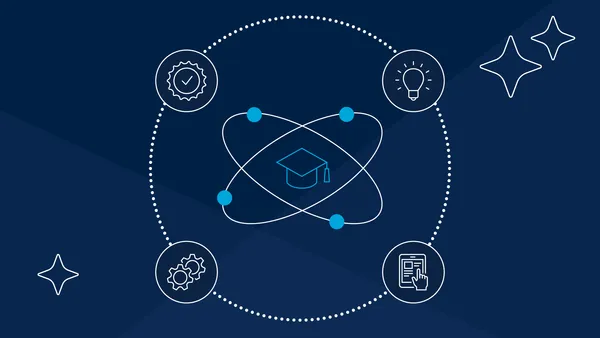As online courses and a greater emphasis on technology become fixtures in higher education, advances in digital teaching software are capturing more complex and useful data about how students learn.
Colleges in the online and digital learning space are building in-house data teams and working with software developers to craft big-data models that see relationships among various sets of data, allowing them to enhance aspects of curriculum, faculty instruction and a host of factors related to student success with growing precision.
“For some time, we only had the learning management systems that would tell us when a student logged in, when they logged out and which pages they clicked on. But that click-through content still doesn’t give us a sense of how students are engaging the content, if they are actively learning from content and where we can help them if we see that there are gaps,” said Christi Ford, associate provost at the University of Maryland University College.
Experts say newer learning analytics are at the beginning stages of predicting when and where students will have problems, therefore creating the space for educators intervene before a student falls behind.
“We also leverage data to do real-time intervention with students. If we see that a student might be struggling in a particular area, then a mentor will see that and they’’ know that that’s a student they need to reach out to, said Sarah DeMark, Western Governors University Vice President of Program Development.
Some of it happens before classes start. Different platforms can quickly administer diagnostics which provide data about what students know and the skills they bring before class begins. Given a headstart, instructors can adapt teaching content to their students’ needs much faster, saving crucial time that is otherwise wasted.
“The analytics that are available now in the systems for faculty no longer require faculty to wait [until a student fails] a midterm or quiz,” said Ford.
While in class, technology permits instructors to accelerate student feedback. Feedback is a critical component of learning and teaching, however, in the traditional classroom that exchange is susceptible to a range of delays. When student feedback is slow, students lose ground that’s hard to make up. For instructors, not being able to master the feedback loop slows down the ability to transition to more advanced subjects.
“Faculty are really interested in shortening the feedback loop to the student at the time they struggle with content,” said Nori Barajas-Murphy who serves as grant director for the Online Learning Consortium (OLC), a collaborative community of higher education leaders that promotes digital innovation in education. “Faculty are looking for courseware solutions that provide immediate feedback to the student.”
“We’re measuring student knowledge attainment and learning at a very granular level,” said Jason Levin, the Vice President of Institutional Research at Western Governors University (WGU), a major online university. He added that WGU’s data models can “identify weaknesses and strengths in individual learning terms.”
Last year, OLC awarded $100,000 to WGU, highlighting in particular its Leadership and Communications course, which is taken by about 1,000 nursing students every month. WGU reps said students gave the new course excellent reviews, but moreover, WGU was able to track a positive relationship between the course and students who successfully move on to complete their degree program.
Other more useful information that teaching software is capturing includes data sets around revision history, where students log on or log off, content that generates the most discussion, how students tend to move through a course, the results of low-stakes assessment, and multiple submissions.
“One of the benefits of being an online university is we capture a ton of data, so we know what students are spending time on and how it equates to their performance,” said DeMark. “We know not only what they are spending time on but they are going back to and how they are using the resources that we provide. So we are constantly using that data of student engagement to continuously improve our programs, our curriculum and our assessments.”
But action purley aimed at courses and curriculum is still half the picture. Two-thirds of students who drop out or stopped without successfully completing online course do so for non-academic reasons, a factor that is particularly true for institutions like WGU, which serve busy adults with numerous outside responsibilities.
“Part of the overall value of data analytics is knowing when something is up with the learner and then having trained and at-the-ready very good academic and other advisors from financial aid, student services, career services and job searches, all of that is part of it,” according to Peter Smith, Orkand Chair and Professor of Innovative Practices in Higher Education at the University of Maryland University College.
WGU’s data models also combine information about the jobs and skills employers want. They use software that pulls and aggregates skills from various jobs boards and matches it to their curriculum, according to Levin.
“The value of data in the online environment is that it creates a much higher potential for highly personal customized responses to all the different aspects of an adult learner’s life,” said Smith. “It’s a righteous cycle of consistency and improvement.”




















